The Famous Hippy Caves of Matala

The Hippy vibes are strong in Matala. A small, peaceful fishing village with a beach like no other. A beach with glorious azure waters, high sedimentary sandstone cliffs with hand-carved caves from the Neolithic period. Caves that attracted throngs of Hippies in the 1960s and 70s, and inspired some of the 1960s most celebrated musicians. It was here that Joni Mitchell, a powerhouse of folk history, penned her celebrated album ‘Blue’ in 1971. Inspired by the sheer joy she felt here. The Greek film “My Aunt the Hippie”, starring Rena Vlachopoulou, was also set here. It was a place of inspiration and creativity, and I wanted to discover a piece of my own. I had driven an hour from the Olive Green – my favorite eco-friendly & smart hotel in the center of Heraklion – to enjoy this enigmatic site. As soon as I entered the confines of Matala. I was greeted with a quirky sign that read “Life is today, tomorrow never comes”. I already felt at home here.

The caves of Matala once housed lepers, and later were used as burial crypts. The town had two grocery stores, a bakery, and one single phone. Until one fine day, a group of backpackers in search of themselves saw something in this peaceful haunt and decided to make it home. Across the times, In moved Joni Mitchell, Cat Stevens, and a host of other backpacking Hippies. Enjoying the freedom to create in this epic landscape. Forever the place would become immortalized in time as a place of creativity, peace, and enlightenment. The Hippies came from the four corners of the earth to Matala. Bohemian hedonists wanting to liberate themselves from the confines of a conservative society. They craved the freedom of speech, body and soul. The American dream, of materialism, wealth and acquisition was less important than the idea of peace for all men, freedom to love, live, and experiment. It was 1965, the era of sex, drugs, rock and roll, and Matala had just the right atmosphere to fule their coveted lifestyles. The beautiful bay with the clear welcoming waters, the pristine beach, the few amenities in the town, and of course, the ready-made homes in the caves. A little piece of heaven far away from the grip of consumer society. The sense of freedom was uncomparable. The Hippies had found a place where they could express themselves and enjoy life’s simple comforts in peace, a world away from the repressed expectations of America. This secluded corner of Crete was pure paradise.

At this point, the local Cretan’s had never even seen a tourist, so you can imagine their culture shock to suddenly see groups of foreign men and women, their long blonde hair and blue eyes frolicking on the beach. Their free love lifestyles sent shocks around the once quiet community. By the summer of 1986, the prestigious American magazine ‘Life’, published an article by Thomas Thompson, along with stunning pictures of a very young couple living in the caves by Denis Cameron. The Home of the Hippies in Matala was big news, and suddenly everyone had heard of Matala, the land of the Hippies Promise! The Cretans felt differently, and a year later, the Cretan newspaper ‘Mediterranean’ shied away from the favorable descriptions of “freedom” “flower power” and “promise“. For “bummer”, “unbalanced” and “abnormal” and deplored the Hippies for their nudity, drug use, and promiscuity. Police raids were ordered on the inhabitants of the caves, and 17 convictions were made over the possession of cannabis.
Eventually, the entire population of Hippies were driven out and settled to more remote areas of Kapetaniana, the palm forest of Vai and Preveli. Though it is said among locals that there are still small nomadic groups still living in the cave systems in the surrounding mountains. Today, the hippy lifestyle is still prevailing in Crete, though the main hippy haunt is on Disko beach in Lendas. Not at all far from its origins in Matala, but Matala stills clings on to its claim to fame with the history of its caves, and a prodigious yearly festival on the beach, the so-called “Festival of Flowers” or “Matala Beach Music Festival”.
The Woodstock of Matala

Every year, since 2011, the free Matala Beach Music Festival is held in June on the beaches of Matala. Celebrating its claim to fame as a Hippy wonderland. Three days of concerts of all kinds: A host of popular Greek and international artists from around the world come together for this spectacular celebration of music, freedom, and nostalgia. Streets are decorated, people compete in creativity to decorate the streets with huge drawings in the symbols flower power, peace and love and other messages of the 60’s liberation movement. It’s a good idea to spend a bit of time in the fun and fancy-free village. Before heading to the main attraction of Matala beach. The carved tree at the entrance to the village is especially striking. Almost all the streets and laneways are painted with art and games. In 2016, more than 40.000 people enjoyed the amazing event that grows in popularity every year.
Matala Beach – An Instagrammer’s Dream

Finally, on that fated beach, I found myself soaking in a 60s retro dream. The sound of the waves thrashing in one ear, the soothing sounds of 60s rock sensation the Beatles in the other. I embraced the al fresco Hippy vibe on Crete’s most Instagrammable Beach. Taking off my sandals, I felt the warm sand fill the gaps between my toes before I set off to explore. It was still early and the sun was low enough to cast a glorious glow over some of the caves. Making them seem even more magical. I couldn’t help but stage a few shots silhouetted against the dark cave shadows. The far off Matala village at the other side of the bay looked magical framed by the rock of the inner cave.
*There is a small fee of 3 euros if you want to visit the caves. They are protected by the Archaeological Service. The true nomadic Hippy culture of this town is long gone, but the aura of peace and appreciation of the stunning environment is alive and well.
I’d always been fascinated by the way these people had once lived, where their inspirations came from. Maybe it was because I loved listening to Janis Joplin, Bob Dylan and Joan Maez‘s voices echo through my most beloved songs. Joni Mitchell singing to “Carey,” her formidable island lover. The one she met through a serendipitous turn of events on her first day in Matala.
As we stood staring out, an explosion went off behind us. I turned around just in time to see this guy with a red beard blowing through the door of a cafe. He was wearing a white turban, white Nehru shirt and white cotton pants. I said to Penelope, ‘What an entrance—I have to meet this guy.’ … He was American and a cook at one of the cafes. Apparently, when he had lit the stove, it blew him out the door. That’s how Cary [Raditz] entered my life—ka-boom.
Lamenting her lyrics in the warm air of Matala beach. “The night is a starry dome. And they’re playin’ that scratchy rock and roll. Beneath the Matala Moon.” I could see what she saw in this wondrous place. The ‘Mermaid Cafe‘ from Joni’s time is no longer here. But there are other cafes, simple and timeless. Where you can enjoy ouzo, raki, and wine, and perhaps meet a love of your life like Joni.
“Come on down to the Mermaid Cafe and I will buy you a bottle of wine
And we’ll laugh and toast to nothing and smash our empty glasses down.”
Back on the beach, I found a spot in front of those dazzling caves, a sea of blue parasols at my back. Taking time to build a sandcastle. Decorating it with every interesting shell and piece of driftwood I could lay my hands on. The beach was certainly a little busier than it was before the hippy boom.
I had a small patch of the beach to myself as I sat watching the waves lap at the sand. I couldn’t deny this place was beautiful and yet peaceful still. Donning my oversize sunglasses and floaty headscarf to shield from the sun. I lay my back against a warm rock near one of the caves and settled down to read a book. I hadn’t stretched to buying a pair of elephant pants in one of the bohemian craft stores, but there were a plethora of designs available. After a spell, I felt the hunger returning and decided to enjoy lunch with a view of the spectacular caves. Choosing one of the tavernas by the sea. Easily one of the more picturesque places I have had the pleasure to gaze at whilst enjoying dolmades. The traditional greek snack of grape leaves stuffed with rice.
Matala Mythology & Detour to Festos

According to Greek legend, Matala has another important connection in history. The ever-present Greek mythology and stories of the Gods. It spins the tale of the God Zeus rising from the depths of the sea onto the beach in Matala as a pure white bull, and seducing the Princess Europe. He metamorphosed into the shape of an eagle and flew with her to the ancient city of Gortys. Later birthing three sons, Minos, Rhadamanthus, and Sarpedon.
There is no shortage of archaeological sites, and on the way to my next stop, I decided to take a small detour to the Minoan ruins of Festos. Also known as Phaistos, Phaestos or Faistos. But any will do. From the hillside, you can get a spectacular panoramic view of the ancient site with the mountains in the backdrop. Architecturally, though in ruins it was very similar to the palace of Knossos and I marveled again at the ingenuity of the historical Minoan builders.




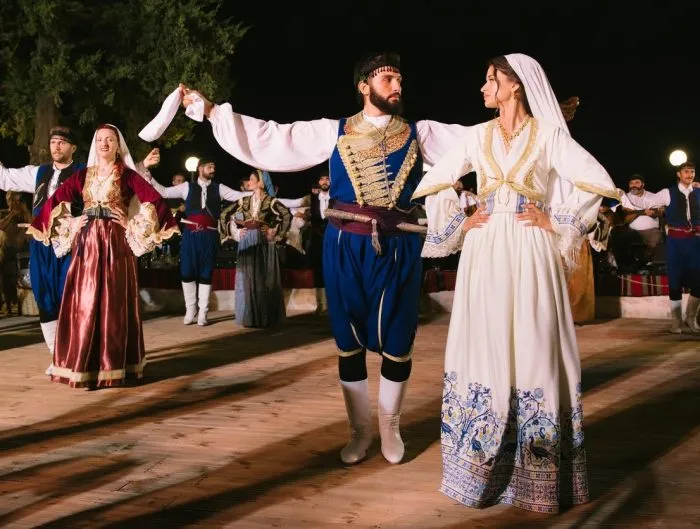

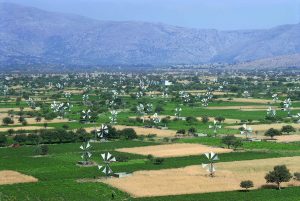
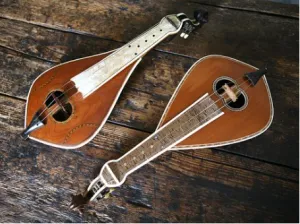
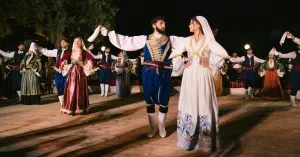

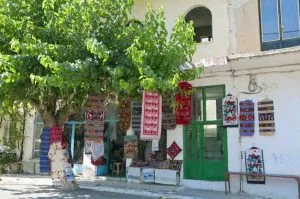





























Leave A Reply